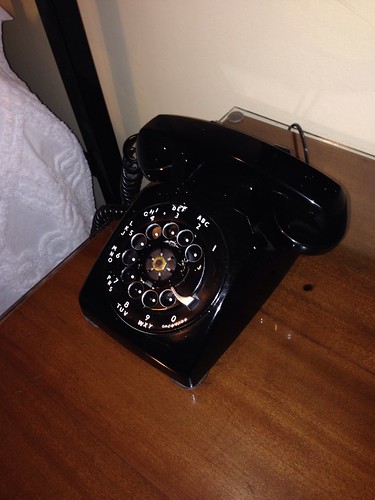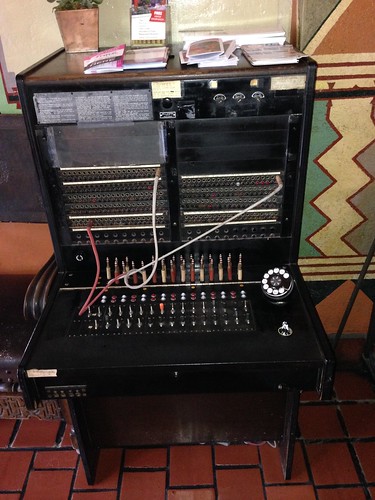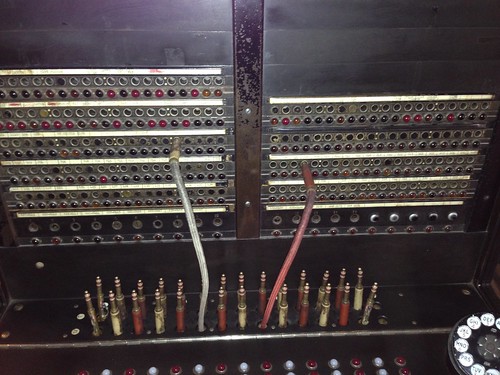Mrs. Overclock and I recently paid a visit to Tucson Arizona to spend time with family on the eve of our thirtieth wedding anniversary. We spent a couple of nights at the downtown Hotel Congress, built in 1919 and best known historically as having played a role in the capture of the notorious John Dillinger in 1934.
One of the first things I noticed when we entered our room was the the rotary dial phone.

The rotary dial room phones were in turn connected to a manual telephone switchboard stationed behind the reception desk in the main lobby. (This photograph is actually of one of the two additional inactive manual switchboards on display in the hotel lobby.) Notice the switchboard also has a rotary dial.

Here's a close up of the tip-and-ring connectors one of those switchboards. As you can see, they are almost identical to the "phone plug" shown in my original article and which I purchased at my local Radio Shack, intended for applications like quarter-inch stereo headphone jacks.

As I've said before, telephony technologies tend to be long lived. This is partly due to the network effect: the more people that were able to connect using a technology, the more useful and hence the more valueable it was. This was frequently an issue for telecom developers of yore as they discovered that customers expected to amortize their telecommunications equipment purchases over a decade or more. Hence, telephony equipment -- both hardware and software -- was typically built to last.

1 comment:
Just an example: the tip-ring-sleeve jack, familiar from headphones, was invented for manual telephone switchboards and designed for reliable operation over thousands of insert/remove cycles. It is still the best connector ever designed.
Post a Comment